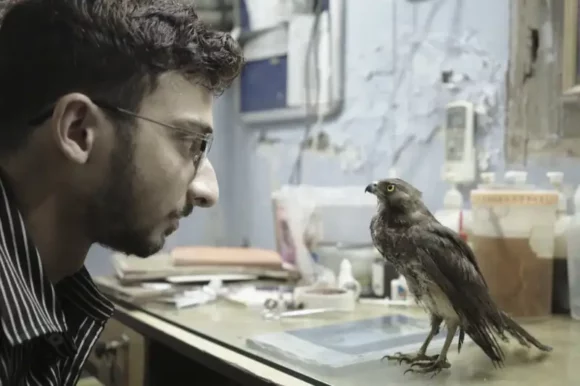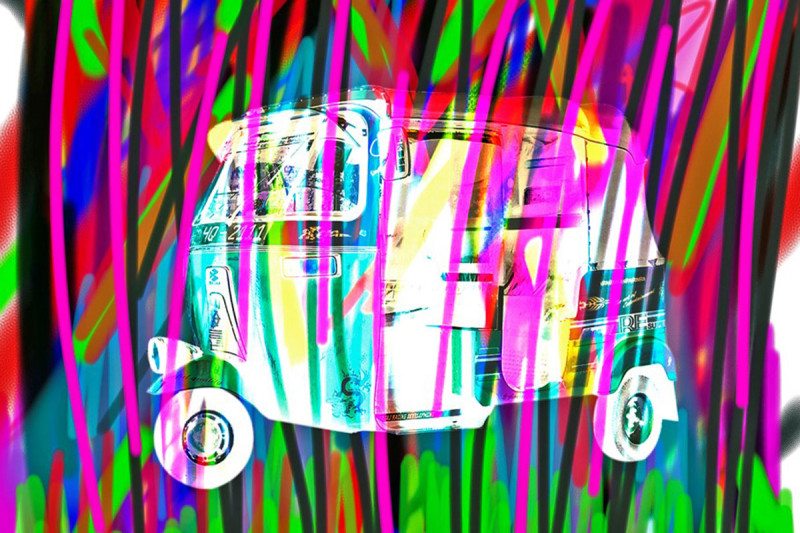Watching Shaunak Sen’s All That Breathes for New Scientist, 28 September 2022
“Hundreds of birds are falling out of the sky every day,” complains Nadeem Shehzad, by far the grumpier of the two cousins whose life’s work is to rescue the injured raptors and waterbirds of Delhi. “What amazes me is that people go on as if everything’s normal.”
People, in Shaunak Sen‘s award-winning documentary, aren’t the only ones making the best of things under Delhi’s polluted skies. The city is also home to rats, pigs and frogs, mosquitoes and turtles, cows and horses and birds, and especially black kites, who have come to replace vultures as the city’s chief recycling service, cleaning up after the city’s many slaughterhouses and meat processing plants.
The film follows Nadeem, his brother Mohammad Saud and their young cousin Salik Rehman as they struggle to turn their family obsession into [https://www.raptorrescue.org] a fully fledged wildlife hospital. No sooner is yet another funding bid completed then their meat mincer breaks down. No sooner is a wounded bird stitched up than there’s a power cut and all the lights go out. What happens to the family’s sewer connection when the monsoon arrives does not bear discussing.
These struggles are compelling and yet this is not really a film about humans. It’s about, quite literally, “all that breathes”. The humans are just one more animal trying to eke out a living in this alien place called Delhi: not a bad place, but not a human place neither: more a baffling accident of history.
The cousins compare notes on the threat of nuclear war between India and Pakistan while, barely two kilometres away, religious riots tear up the streets. Feral pigs cross a nearby stream. A millipede eases itself out of a puddle, even as a passing aeroplane casts its reflection in the water. The film’s first shot is a sumptuous pan across a rat-infested rubbish dump. Filmed at a rodent’s eye level, bare inches from the ground, a fascinating, complex, dramatic world is revealed. Later, we hear how Hindu nationalists are presenting the city’s muslim population in terms of disease and hygiene. Any European viewer with an ounce of historical sense will know where this thinking can lead.
Whether or not one picks up on all the film’s nested ironies is very much left to the viewer. Sen’s method is not to present an argument, but rather to get us to see things in a new way. Of the film’s main subject, the black kites, Sen has said, “I want audiences to leave the theater and immediately look up”.
Achieving this requires a certain amount of artifice. Viewers may wonder how it is that a tortoise reaches the top of a pile of garbage just in time to watch a motorike career around a distant corner. Individual shots took days to capture; some took much longer. The human conversations are a little more problematic. After consuming so many slipshod hand-held documentaries, I found the conversations here a little too on-message, a bit too polished to be true.
But why cavil at a powerful and insightful film, just because its style is unfamiliar? Filmed between 2020 and 2021 by German cinematographer Ben Bernhard, supported by Riju Das and Saumyananda Sahi, All That Breathes inhales extreme close-ups and cramped interiors, exhales vertiginous skyscapes and city skylines.
The story of Delhi’s black kites, regularly injured by the glass-coated threads used to fly paper kites — one of Delhi’s favourite leisure activities — might have been better served by a more straightforward story. But then the kites would, in the same breath, have become a small, contained, even inconsequential problem.
The whole point of Sen’s film, which won a Grand Jury prize at this year’s Sundance Film Festival, is that the kites are a bell-weather. We’re all in this emergency together, and struggling to fly, and struggling to breathe.


